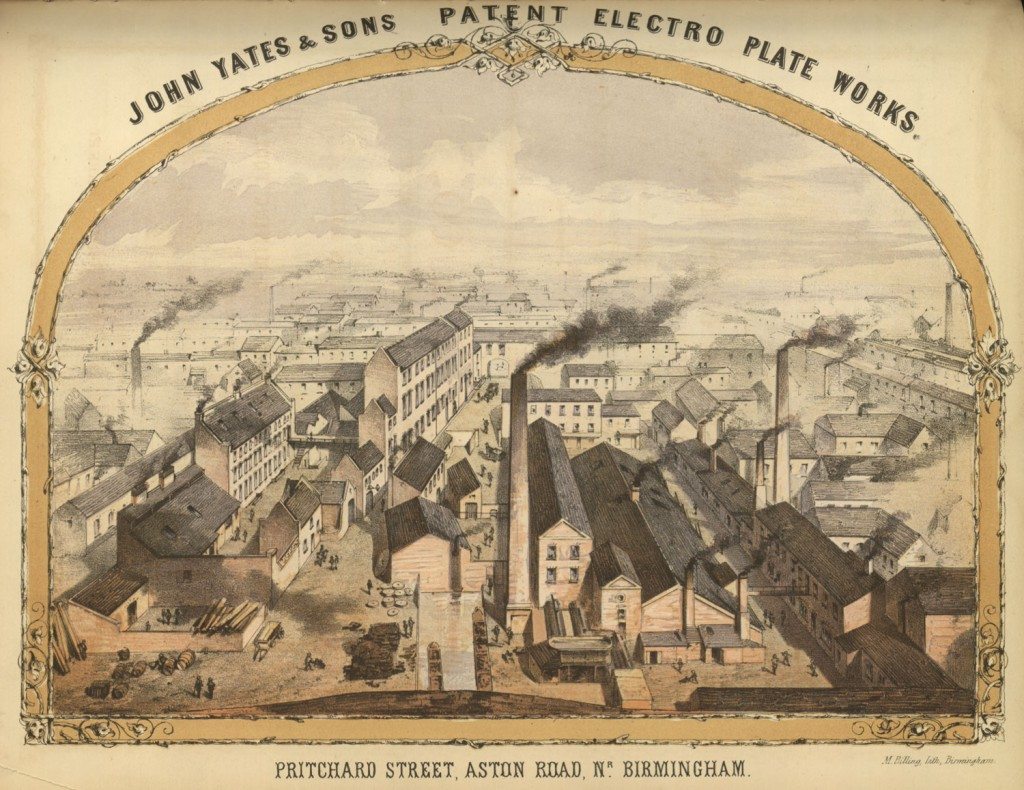John Yates & Sons, Patent Electro Plate Works, Birmingham
Image from: The New Illustrated Directory Entitled Men and Things of Modern England, 1858
ELECTRO-PLATING
The art of ELECTRO-PLATING has, to a considerable extent, superseded the old methods of plating in silver upon copper or other base metals. By this method, the silver is reduced from aqueous solution of one of its salts, upon the articles to be plated. The reduction of the silver is effected by the use of an electrical current, derived either from a voltaic battery or a magneto-electrical machine. We will describe the most commonly practised method of electro-plating. The bath, from which the silver is reduced, consists of a solution in water of the salt called by chemists argento-cyanide of potassium. This salt is prepared by adding to a solution of nitrate of silver a solution of cyanide of potassium, until the precipitate first formed is re-dissolved. Articles of copper or brass, immersed in this solution, become plated or coated with a very thin film of silver, without the use of an electrical current; but the application of electricity is necessary in order to reduce on the article to be plated a film of silver of the requisite thickness for the manufacturer’s purpose. To effect this, the articles to be plated is connected by an unbroken metallic contact with the zinc or positive end of a voltaic battery and a plate of silver is similarly connected with the copper or negative end of the same battery. The article and the plate of silver are plunged into a vat containing the solution of silver salt above described. An electrical current immediately passes across the solution from the silver plate to the article to be plated, which we will suppose to be a teapot.






